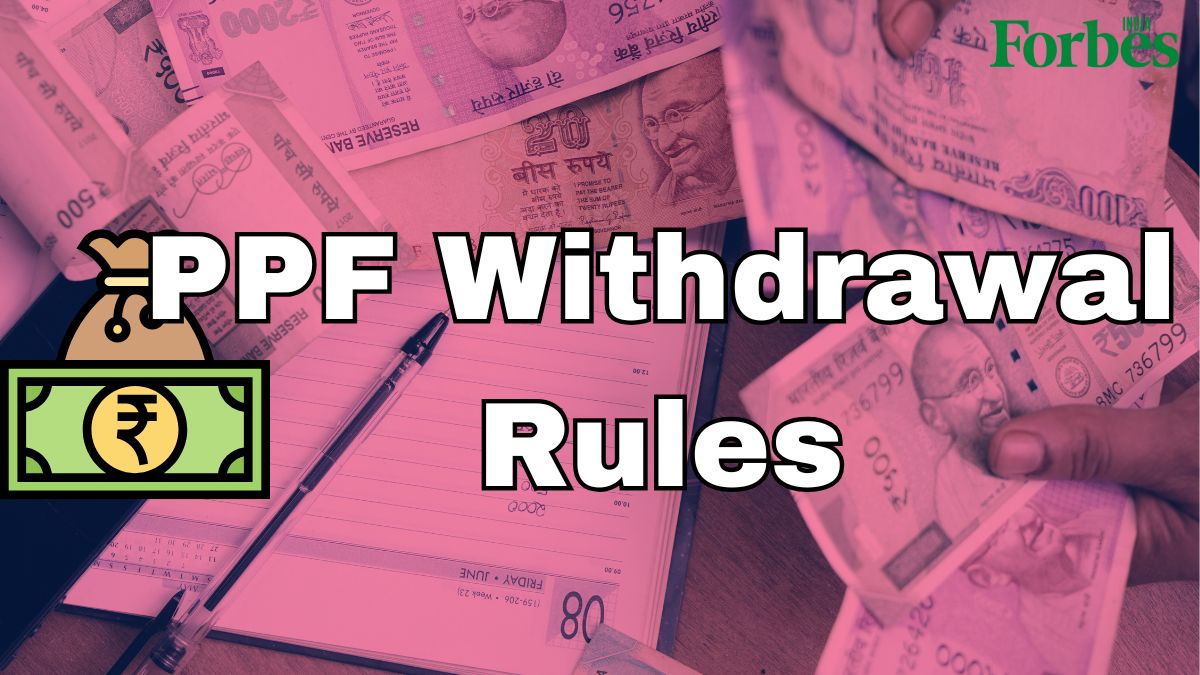
Understanding the rules and regulations of different financial instruments is crucial when planning for long-term savings and investments. The Public Provident Fund (PPF) is one such investment option that offers significant benefits but comes with specific withdrawal rules that every investor should be aware of. In this blog, we will look into the essential PPF rules for withdrawal to guide you in making well-informed investment decisions.
What is PPF?
The Public Provident Fund (PPF) is a long-term savings scheme the Government of India introduced in 1968. The PPF account is known for its tax-free interest, compounded annually, making it a popular choice for those wanting to build a substantial retirement corpus over time. PPF encourages savings by offering tax benefits under Section 80C of the Income Tax Act and tax-free interest. The 2024-2025 interest rate for PPF is 7.1 percent per annum, compounded annually. This makes PPF an attractive option for risk-averse investors seeking long-term growth of their savings.Also Read: Hindu Undivided Family (HUF): Benefits and drawbacks in saving income tax
Understanding PPF Withdrawal Rules
The government of India has established PPF rules for withdrawal to manage how and when account holders can access their funds. Here are the types of PPF rules for withdrawal:
- Partial withdrawal in PPF
- Premature withdrawal in PPF
- Withdrawal rules after 15 years
These rules ensure that while providing flexibility, the primary objective of long-term savings and retirement planning is upheld. The PPF rules for withdrawal balance offer freedom to account holders and support long-term savings and retirement planning.Also Read: National Pension Scheme (NPS): How to invest, tax benefits and eligibility
Types of PPF rules for withdrawal
Here is the tabular format of the PPF rules for withdrawal for all three types:
| Type of Withdrawal | Eligibility | Conditions | Penalties/Interest Impact |
|---|---|---|---|
| Partial Withdrawal | After 5 years of account activation | Can withdraw up to 50% of the amount at the end of the 4th year preceding the withdrawal year | None |
| Premature Withdrawal | After 5 years of account activation | Allowed under specific conditions such as medical emergencies or higher education | The interest rate reduced by 1% for the withdrawn amount |
| Withdrawal After 15 Years | After 15 years of account activation | No conditions, can withdraw the entire balance | None |
Partial withdrawal in PPF
Partial withdrawal in PPF is allowed after the account has been active for at least five years. This provision enables account holders to withdraw a portion of their funds while keeping the account active and continuing to earn interest on the remaining balance. For instance, you opened a PPF account in 2024. By 2029, you will need funds to renovate your house. As per PPF rules for withdrawal, you may withdraw up to 50 percent of the amount at the end of the fourth year. If the balance at the end of 2027 is ₹4,00,000, you could withdraw up to ₹2,00,000.
Premature withdrawal in PPF
Premature withdrawal from PPF is allowed under certain conditions, such as medical emergencies, higher education fees, or a change in residency status. However, these withdrawals can only be made after the account has been active for five years. It is important to note that premature withdrawal from PPF may attract a penalty or reduction in interest rate.Suppose you opened a PPF account in 2023 and encounter a medical emergency in 2028. You can withdraw the required amount subject to a penalty. Also Read: Documents required for a passport appointment in India
Withdrawal rules after 15 years (maturity)
After completing the 15-year term of a PPF account, the account holder can withdraw the whole balance without penalty. Alternatively, the account can be extended for additional blocks of five years each, with or without making further contributions. This flexibility is a key aspect of the PPF withdrawal rules.For instance, you started a PPF account in 2022 and will mature in 2037. You can withdraw the entire balance, which could be significantly higher due to the compounded interest. With consistent contributions and an average interest rate of 7.1 percent, your balance might be around ₹35,00,000.
PPF withdrawal rules after 15 years extension
If you extend your PPF account beyond the initial 15-year timeframe, the withdrawal rules change slightly. During the extension period, you can withdraw up to 60 percent of the balance that was available at the start of the extension period, spread over the extended five-year block.Understanding the PPF withdrawal rules after 15 15-year extension is crucial for long-term financial planning.For example, your PPF account had ₹20,00,000 at the end of the initial 15 years in 2015. During the extension period, you can withdraw up to ₹12,00,000 (60 percent of ₹20,00,000) over the next five years. This aligns with the PPF withdrawal rules after a 15-year extension.Also Read: Passport renewal process in India: Fees, required documents and more
Taxation on premature withdrawal in PPF
While the PPF scheme generally offers tax benefits, premature withdrawals can attract penalties that affect your overall returns.Premature withdrawal in PPF, when permitted under specific conditions, usually comes with a reduction in the interest rate. For example, if the applicable interest rate was 7.1 percent, a premature withdrawal might reduce this rate by 1 percent, which means you would earn interest at 6.1 percent instead. This reduction effectively serves as a penalty for withdrawing funds before completing the full 15-year term. Despite this penalty, the withdrawn amount itself remains tax-free, maintaining PPF’s attractiveness as a tax-efficient savings option.
